
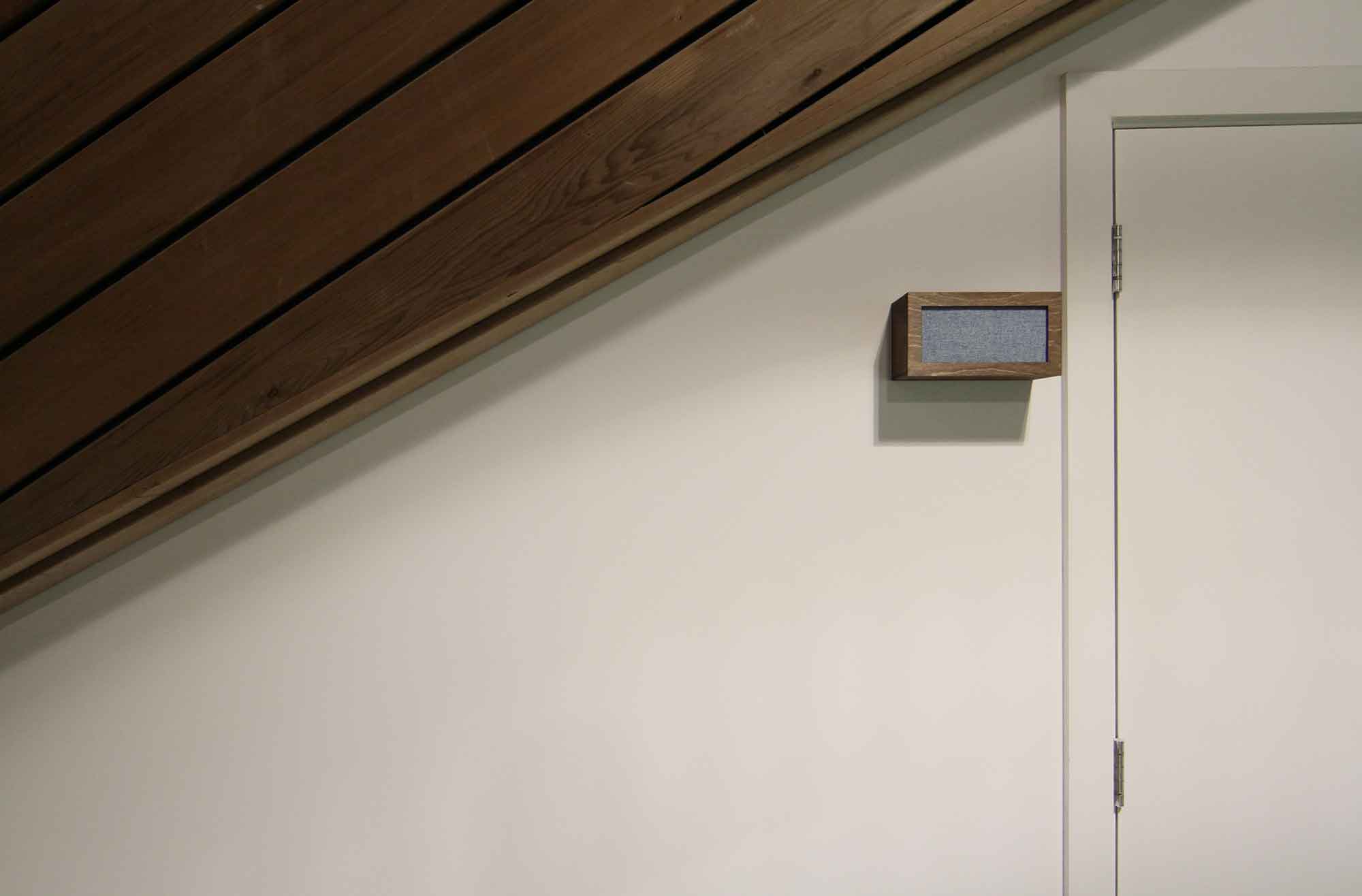
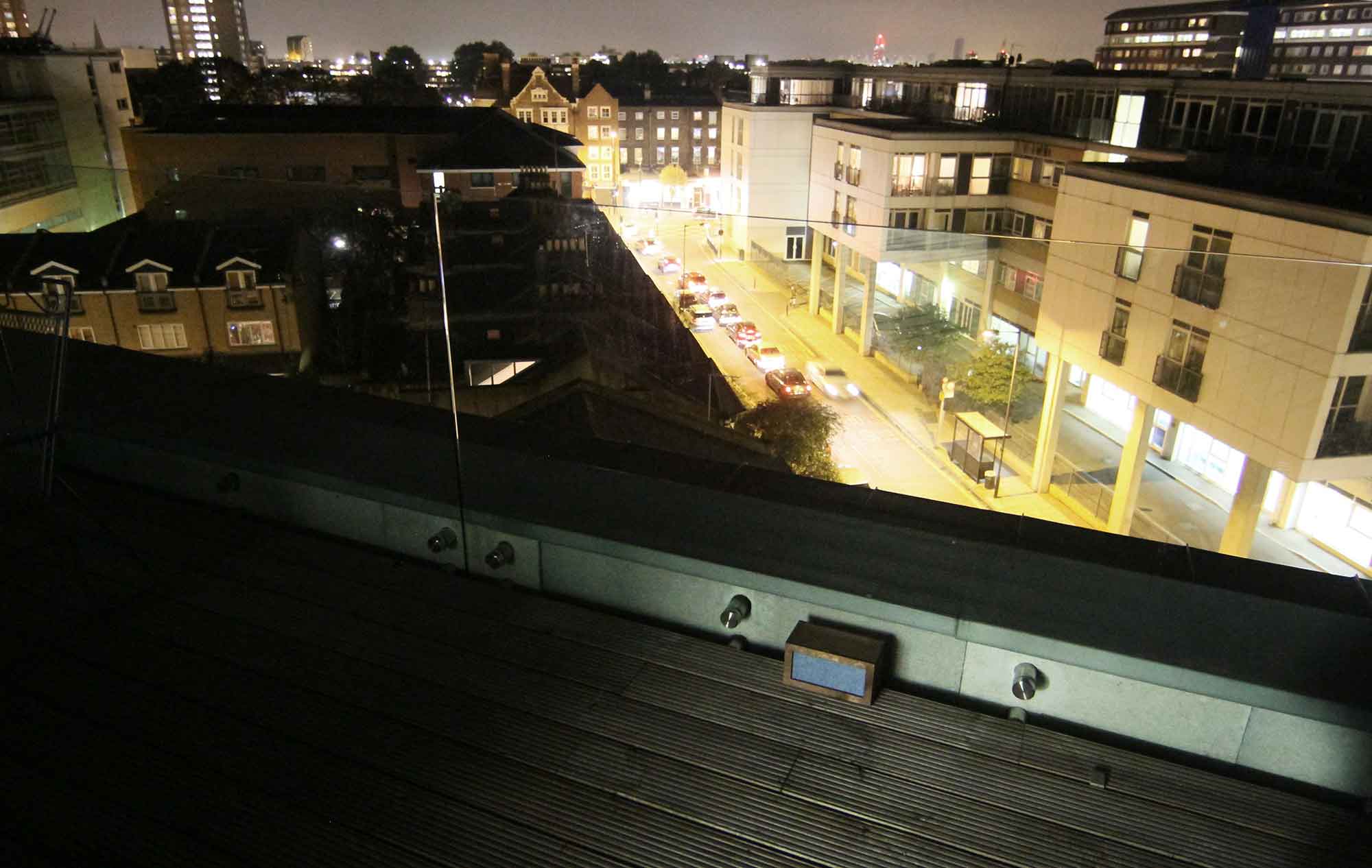
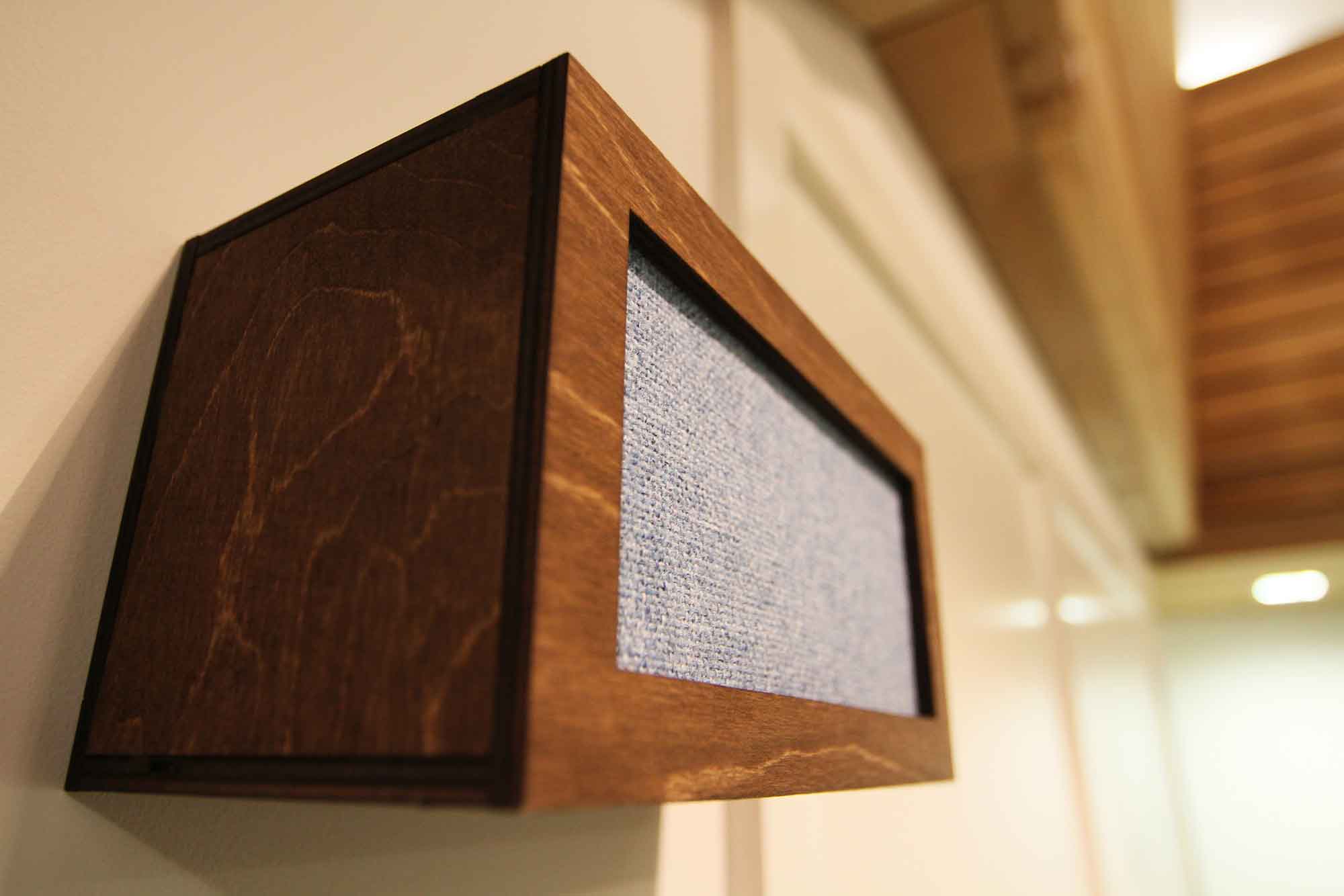
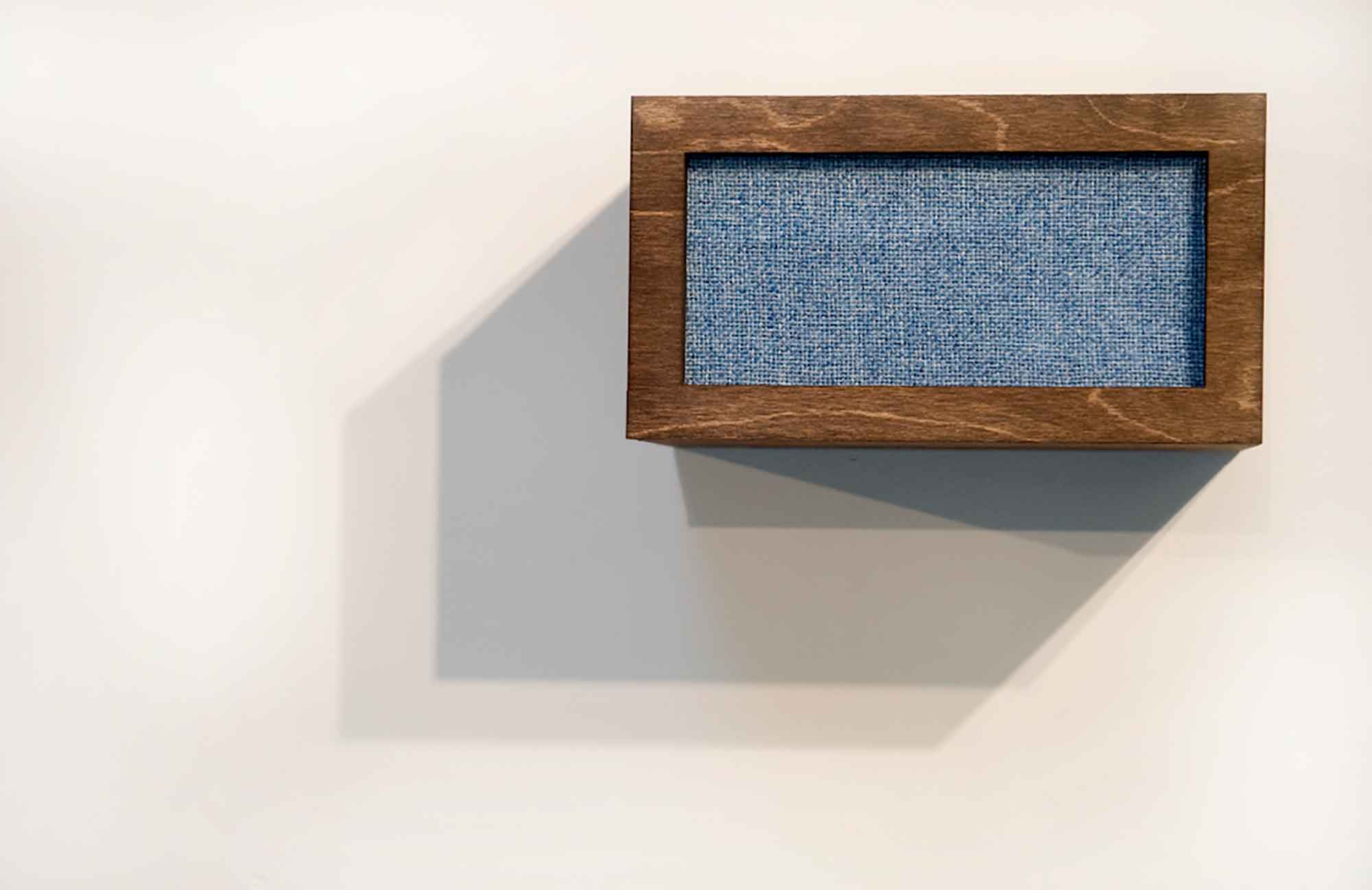
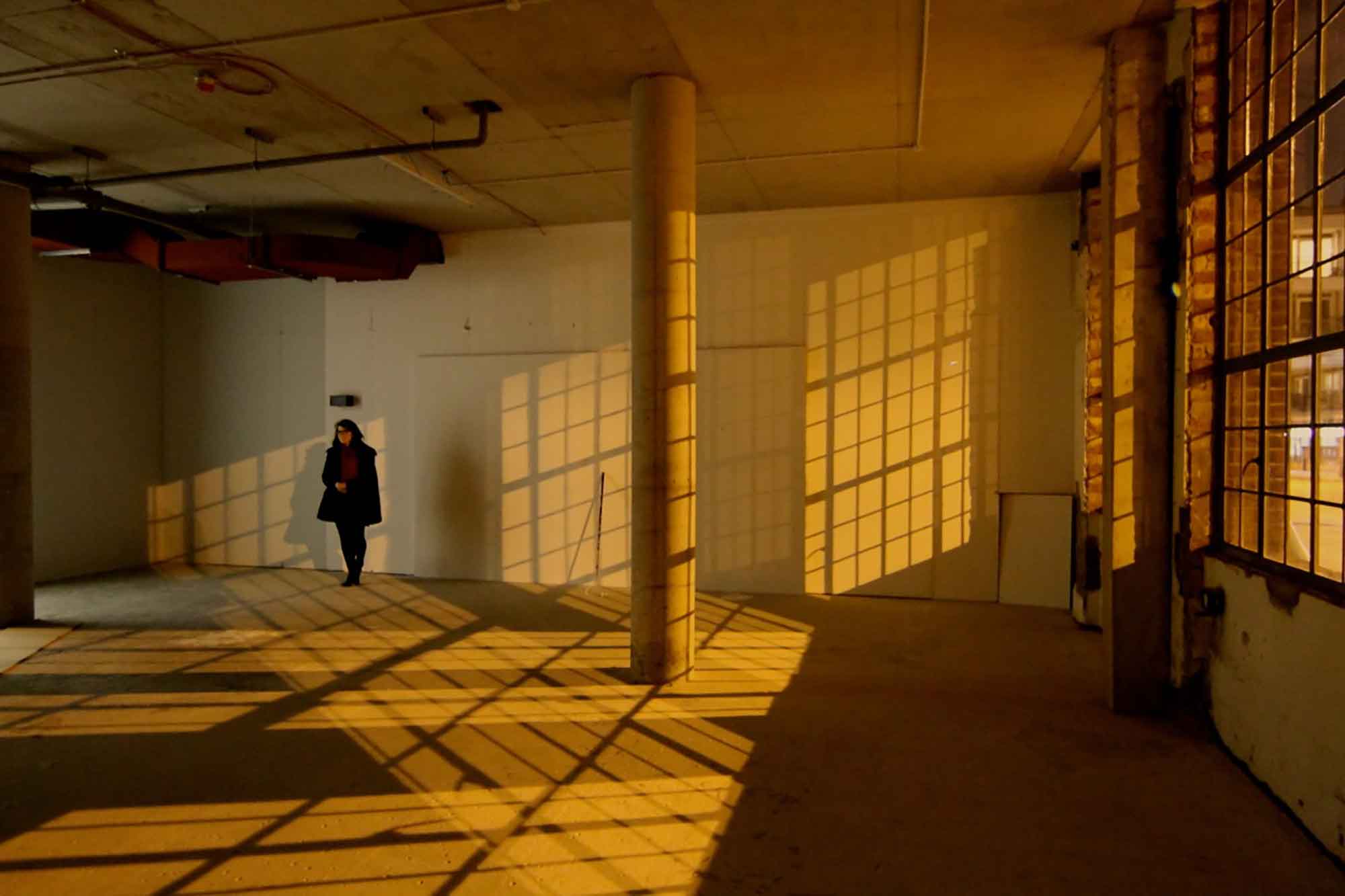
‘An echo cannot occur without a distance between surfaces for the sounds to bounce from. But the resonation is not on the walls. It is in the emptiness between them. It fills the emptiness with its complex patterning.’ Brian Massumi, Parables for the Virtual: Movement, Affect, Sensation. (Durham: Duke University Press, 2002), p.14
Sound artist Ella Finer invited me to respond in writing to her site-responsive installation Where We Meet (Galerie8, Hackney, London) in September 2012. Her work entailed twelve speaker boxes playing back twelve voice compositions which had been created over twelve weeks. The recordings included singing, conversation (both scripted and incidental) and the building’s own natural sounds. The work I produced alongside was a Jane Rendell-esque site-writing in twelve acts.
Emily Orley is an artist, researcher and educator whose work includes performance, installation and art- (or place- or commemorative-) writing. She is interested in exploring ideas to do with memory and mis-memory, maintenance and enchantment, history, heritage and place (and how these all co-exist). As a practitioner-researcher, she is a firm believer in breaking down the false binaries that separate practice and theory, making and thinking and writing about making.
She often works in collaboration with practitioner-researcher Katja Hilevaara (katjahilevaara.com), and is currently Senior Lecturer in Drama at the University of Roehampton. She has degrees from the Wimbledon School of Art, Cambridge and Roehampton Universities. She also trained at the Jacques Lecoq School in Paris. More information and images of her work can be found at www.emilyorley.com.
Since hearing Jane Rendell give a talk about her writing practice when I was a postgraduate student, I have boldly adopted her method of site-writing whenever I can as a way of experimenting with writing (as opposed to writing ‘about’) my own and other’s work, as well as found objects and places that have been particularly inspiring to me. Whatever I call my writing now (sometimes creative-critical, sometimes commemorative), it stems from the seed of the idea that Rendell planted all that time ago: that to respond in writing can be to produce an artwork in its own right.
The poetry of Anna Achmatova, T.S. Eliot and Rainer Maria Rilke, the sculptures of Doris Salcedo, Susan Hiller and Cornelia Parker, the writings of Karen Barad, George Elliot, Laura Harris, Luce Irigaray, Erin Manning, Doreen Massey, Brian Massumi, Jane Rendell, PA Skantze and Ali Smith.






































































